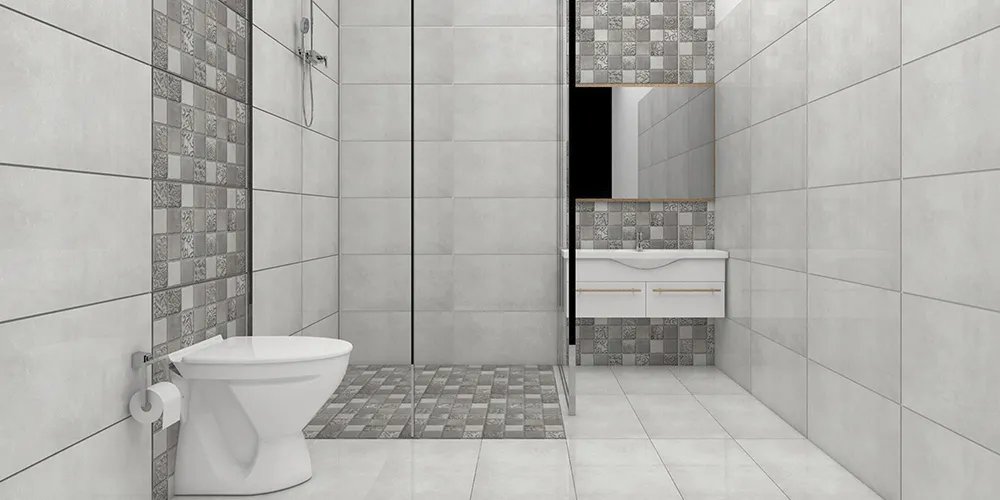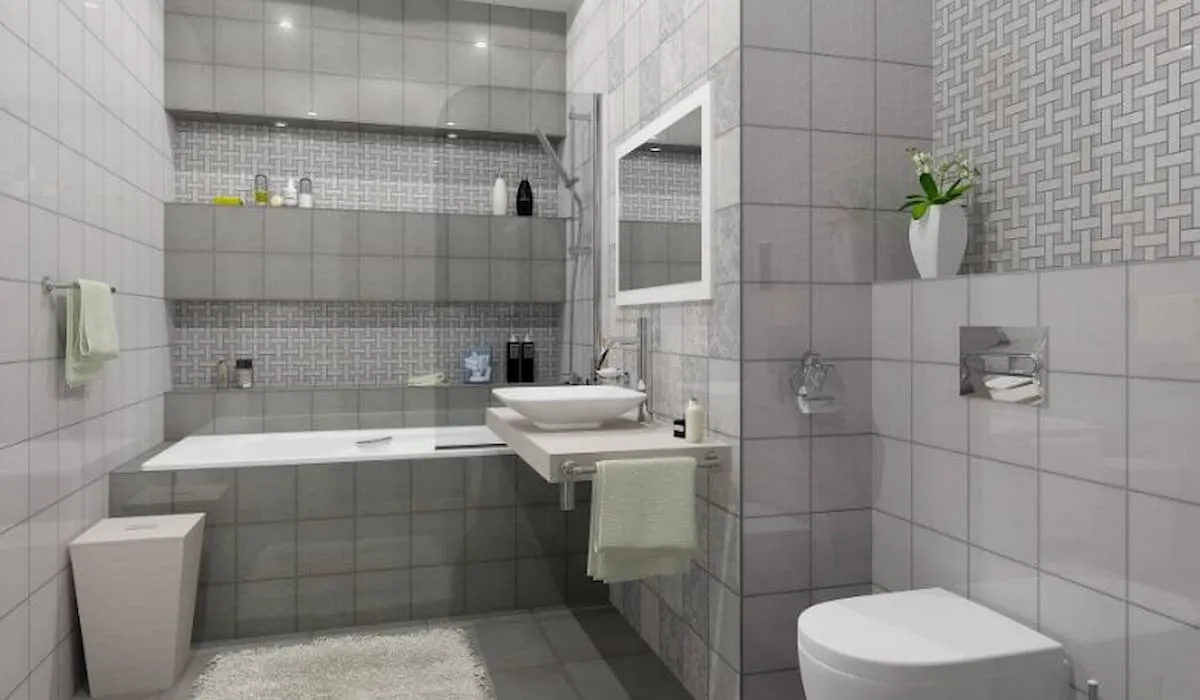Introduction
One element in bathroom maintenance goes unnoticed while playing a great role in aesthetics and functionality-the filler between the filler between bathroom tiles NYT, commonly known as grout. It is meant to more than just give a finishing touch; it protects your bathroom from damage by moisture, thus playing a huge role in its appearance generally. In this comprehensive guide, we delve into everything you need to know about filler between bathroom tiles NYT, types, application methods, maintenance strategies, common issues, and recent innovations.
The Significance of Filler Between Bathroom Tiles NYT
Grout does several important functions. It fills the gaps between the tiles and makes them look smoother and more polished. It also prevents water from seeping to the bottom of the tiles, which could cause massive damage and mold growth. Articles from the filler between bathroom tiles NYT have shown how choosing the right filler and properly maintaining it can make your tiles last longer while keeping a bathroom clean and safe.
Types of Filler Between Bathroom Tiles NYT
A couple of important considerations to consider in choosing the right grout include the type of tile, use in bathroom, and your style. Here is a closer view at the most common types of grout available.
- Cement-Based Grout: This is the most widely used grout type due to its affordability and ease of application. Cement-based grout comes in two varieties: sanded and unsanded. Sanded grout is suitable for wider joints, while unsanded grout is ideal for tighter spaces. However, it is porous, so sealing is essential to prevent moisture absorption.
- Epoxy Grout: Renowned for its durability and resistance to stains and chemicals, epoxy grout is an excellent choice for high-moisture areas. While it may be more challenging to work with and generally pricier than cement-based options, its longevity and performance make it a preferred choice for many homeowners.
- Furan Grout: Furan grout is crafted from polymers derived from fortified alcohols, offering exceptional resistance to chemicals and temperature fluctuations. Although typically found in industrial applications, it is a viable option for residential bathrooms that require heightened durability.
- Urethane Grout: A newer addition to the grout family, urethane grout combines the advantages of cement-based and epoxy grouts. It is flexible, stain-resistant, and easy to apply, making it an increasingly popular choice among homeowners.
Selecting the Right Filler Between Bathroom Tiles NYT
Choosing the correct grout requires careful consideration of various factors. Here’s how to make the best selection:
- Type of Tile: When working with natural stone tiles, opt for unsanded grout to avoid scratching the tile’s surface. For ceramic or porcelain filler between bathroom tiles NYT, sanded grout is generally the better choice.
- Bathroom Usage: For bathrooms that experience heavy traffic, consider more durable options like epoxy or urethane grout. For guest bathrooms or less frequently used spaces, cement-based grout may be sufficient.
- Aesthetic Considerations: Grout color can significantly impact your bathroom’s overall appearance. Choose a color that harmonizes with your tiles; contrasting shades can create a dramatic effect, while matching colors provide a seamless look.
Applying Filler Between Bathroom Tiles NYT
Successfully applying grout is a straightforward process, but attention to detail is key to achieving a polished finish. Below is a step-by-step guide:
Materials Needed
- Grout (appropriate for your tiles)
- Grout float
- Sponge
- Grout sealer (for cement-based grout)
- Bucket of water
- Clean cloth
Step-by-Step Application
- Prepare the Area: Ensure that the tiles and gaps are clean and free from debris or dust.
- Mix the Grout: Follow the manufacturer’s instructions to mix the grout to a peanut butter-like consistency.
- Apply the Grout: Using a grout float, spread the grout diagonally across the filler between bathroom tiles NYT, pressing it into the joints.
- Remove Excess Grout: Hold the float at a 45-degree angle to scrape away any excess grout on the tile surface.
- Clean the Tiles: After 10-15 minutes, use a damp sponge to remove any grout haze from the tiles.
- Seal the Grout: After the grout has cured (typically 24-48 hours), apply a sealer to protect it from moisture and stains.

Maintaining the Filler Between Bathroom Tiles NYT
Proper upkeep of grout is essential for preventing issues such as mold and discoloration. Here are some tips for maintaining your grout:
Regular Cleaning
- Use Gentle Cleaners: Avoid harsh chemicals that could damage the grout. Opt for a mild, pH-neutral cleaner instead.
- Scrub with Care: Employ a soft brush to clean the grout lines, paying special attention to areas that show dirt or stains.
Sealing
- Reapply Sealer Regularly: For cement-based grout, it is advisable to reapply sealer every 6-12 months to maintain its protective qualities.
- Inspect for Damage: Periodically check the grout for cracks or gaps and repair them promptly to prevent water infiltration.
Mold and Mildew Prevention
- Dry the Surfaces: Wipe down filler between bathroom tiles NYT and grout after each shower to minimize moisture accumulation.
- Ensure Ventilation: Proper ventilation is crucial in reducing humidity levels, which can foster mold growth.
Common Issues with Filler Between Bathroom Tiles NYT and Their Solutions
Even with diligent maintenance, grout can face various challenges. Here are some common problems along with their solutions:
Cracked Grout
Cracks in grout can arise from improper installation, structural settling, or normal wear. To fix cracked grout:
- Remove Damaged Grout: Carefully use a grout saw or a multi-tool to extract the cracked grout.
- Clean the Gap: Ensure the area is free from debris.
- Reapply New Grout: Mix and apply fresh grout, following the application steps outlined earlier.
Discolored Grout
Discoloration can result from mold, mildew, or harsh cleaning agents. To restore the grout’s appearance:
- Clean Thoroughly: Use a specialized grout cleaner or a combination of baking soda and vinegar to scrub affected areas.
- Consider Grout Stain: If cleaning does not resolve the discoloration, applying a grout stain can rejuvenate the grout’s color.
Mold and Mildew Growth
Mold and mildew not only detract from your bathroom’s appearance but also pose health risks. To address these issues:
- Clean with Bleach: A bleach solution or commercial mold remover can effectively eliminate mold from grout.
- Enhance Ventilation: Make sure your bathroom is well-ventilated to prevent moisture buildup.
- Seal the Grout: Applying a grout sealer can create a protective barrier against future moisture-related issues.
Innovations in Filler Between Bathroom Tiles NYT
The grout market has experienced numerous innovations, as noted by NYT. Here are some notable advancements:
Stain-Resistant Grouts
Modern formulations of grout are designed to resist stains and discoloration, significantly reducing maintenance efforts and extending the life of your bathroom tiles.
Flexible Grouts
Flexible grout types are engineered to accommodate slight movements in filler between bathroom tiles NYT, thereby minimizing the risk of cracking and enhancing durability.
Eco-Friendly Solutions
With a growing focus on sustainability, eco-friendly grout options made from natural materials are gaining traction, providing environmentally conscious homeowners with effective alternatives.
Advanced Techniques for Applying Filler Between Bathroom Tiles NYT
For those looking to elevate their tile installation skills, consider these advanced techniques:
Utilizing Grout Release
Grout release products can be applied to tiles before grouting, preventing the grout from adhering to the tile surface and making the cleanup process easier.
- Apply Grout Release: Follow the product instructions to apply grout release carefully, avoiding the joints.
- Proceed with Grouting: Complete the grouting process as previously described.
- Cleanup Made Easy: Grout release will facilitate easier removal of any remaining grout on tile surfaces.
Sealing Natural Stone Tiles
Natural stone requires special care to avoid staining during the grouting process.
- Pre-Seal the Tiles: Before grout application, seal the tiles to protect against staining.
- Careful Grouting: Apply grout while minimizing contact with the tile surface.
- Final Clean and Reseal: After grouting, clean the tiles thoroughly and apply an additional layer of sealer for optimal protection.
Expert Tips for Maintaining Filler Between Bathroom Tiles NYT
To ensure your grout remains in excellent condition and prevent common issues, consider the following expert tips:
Routine Maintenance
- Regular Cleaning: Aim to clean grout lines weekly with a gentle cleaner to avoid buildup of dirt.
- Prompt Spill Response: Wipe up any spills immediately to mitigate staining risks.
Annual Deep Cleaning
Once a year, conduct a thorough cleaning of your grout lines to tackle stubborn dirt and stains.
- Apply a Grout Cleaner: Use a commercial grout cleaner or a combination of baking soda and hydrogen peroxide.
- Scrub Effectively: Use a stiff brush to clean the grout lines, then rinse thoroughly with water.
Professional Services
If you’re dealing with extensive grout problems or prefer to leave it to the experts, consider hiring a grout cleaning and sealing service. Professionals have access to specialized tools and products that can effectively restore your grout.
Conclusion
Maintaining the filler between bathroom tiles NYT is essential for the aesthetic and functional longevity of your bathroom. From selecting the right type of grout to mastering application techniques and regular maintenance, understanding this often-overlooked aspect of bathroom upkeep will enhance your space’s beauty and durability. By following the guidelines laid out in this guide, you can ensure that your grout remains in pristine condition for years to come, safeguarding your investment and contributing to a clean, safe environment.
